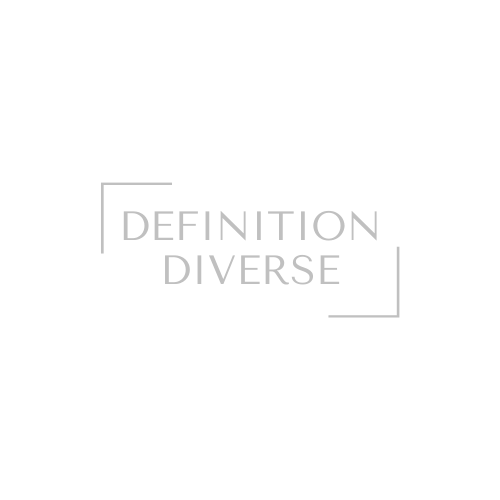ADULTING
OPTIMISING DEVELOPMENT FOR YOUNG ADULTS

WHAT if ?...
We OPTIMISED DEVELOPMENT for YOUNG ADULTS
This general guide to Adulting is a brief overview of topics and skills to optimise the transition from adolescence to adulthood. Please just jump to topics that interest you, or if you wish, view the guide in its entirety.
Check out our content below:
About Us
01
Definition Diverse
We support much needed change to assist individuals with a diagnosis of autism, ADHD, ADD and other neurodevelopmental conditions to enhance their individual potential and quality of life.
02
Services
We support Professional Trainings in PEERS® and other evidence-based approaches and offer consultations in Positive Psychology approaches. We engage in advocacy for neurodivergent people through government, NGO & private organisations. Visit us to learn more or to find a Certified PEERS Provider.
03
Disclaimer
The content on this site is for informational purposes only and does not substitute professional medical advice or consultations with healthcare professionals. Furthermore, these approaches should not be interpreted as inclusive of all approaches to adult development nor exclusive of other approaches. This guide reflects the best available data at the time the guide was prepared.
WHAT IS YOUNG ADULTHOOD?
Young adulthood[1] is an extended period of development between adolescence and adulthood, from ages 18 to 29 years. Research highlights psychological and subjective experiences of individuals aged 18 to 29, to be characterized by an exploration of identity and possibilities, feeling ‘in-between’, instability and self-focus. Understanding the distinct features of the young adulthood allows optimisation of these years which are critical in development.
How can we optimise development for young adults?
Two key questions come to mind when we think about ‘developmental potential’, such as:
What are the dimensions of developmental relationships and opportunities that young people need in adolescence to effectively transition into young adulthood?
What kinds of developmental relationships and opportunities do young adults need for their wellbeing?
Nine dimensions including social, psychological, behavioural, educational, occupational, health, ethical, cultural and civic dimensions are seen to play a role in optimal development. However, research suggests that only a minority of adolescents are well-prepared to make a transition to optimal young adulthood.
[1]Routledge Handbook of Youth and Young Adulthood, by Andy Furlong
THE BRAIN AND NEUROPLASTICITY
The Brain in young adulthood
- In adolescent brains considerable growth occurs- and what also occurs is a process called pruning: nerve growth is pruned back to enable neuronal connections to transmit signals more efficiently. These brain changes explain the difficulties for teens in managing emotions and relationships, handling risks, and navigating complex educational or employment demands. In the transition to young adulthood, greater sophistication in thinking and emotional regulation occurs as teen brains change in specific areas associated with these functions.
- Many studies of young adult brains focus on the prefrontal cortex: associated with planning, problem-solving, risk & reward, prioritizing, thinking ahead, self-evaluation, and regulation of emotion. These abilities together are termed Executive Functions. Also, the prefrontal cortex communicates more fully with other brain regions, including areas associated with emotion and impulses, so all areas of the brain over time, become involved in planning and problem-solving.
LIFE MANAGEMENT AND DIMENSIONS
How do we manage our lives? Can we identify general processes of the relatively new concept of LIFE MANAGEMENT?
- 3 central approaches investigating life management are outlined: self-regulation, age-related expectations (as a guide for managing life across the lifespan), and the role of personal goals as foundational for life management.
- These 3 approaches are complementary and highlight the importance of motivation and goals for life management throughout an individual’s life.
LIFE DIMENSIONS can be thought of as internal and external dimensions that interact to shape our developmental potential.
So, now lets discover various LIFE MANAGEMENT DIMENSIONS to optimise young adult development…
Internal Life management dimensions :
External Life Management dimensions :
THE NATURAL ENVIRONMENT
- Our natural environment plays a key role in our happiness: wherein, environmental quality shapes how we feel and how we evaluate our lives. Also, scientific evidence suggests that being exposed to green, natural environments improves mental wellbeing, reduces stress, enhances positive emotions, assists cognitive restoration and enables positive effects on self-regulation.
- Also, green, natural environments may have indirect positive impacts by encouraging certain behaviours, such as physical exercise or social interaction, through the provision of public, open space – which improves mental or physical health and longevity, and thereby
- Optimising health by being in pleasant, natural environments creates positive outcomes for health, learning, work, experiences, and social relationships. Also, vitamin D is a unique vitamin that most people don’t get enough of – 1 in 3 Australian adults have a vitamin D deficiency, so exposure to the sun is very important for maintaining optimal vitamin D levels. However, too much sunlight comes with its own health risks, so taking care by using a sun hat and sunscreen is recommended.
- Green, natural environments may also have higher environmental quality: that is, being free of certain environmental stressors such as air or noise pollution, linked to respiratory and cardiovascular disease and heightened stress. Green spaces also can provide environmental resources, for example, scenic amenity or land cover for recreation and leisure. So, connecting with nature and our natural surroundings serves both our genetic and evolutionary human nature.
GOAL SETTING
- Goal setting gives us a roadmap, triggers within us new behaviours, directs our focus & sustains our momentum, as well as promotes a sense of self-mastery. Studies also show relationships between goal setting and subjective wellbeing.
